Pizza lovers across America know the famous hotspots like New York and Chicago, but incredible pizza exists far beyond these well-known destinations. Tucked away in small towns and unexpected corners of the country, master pizzaiolos craft magnificent pies worth traveling for.
From coal-fired crusts in Pennsylvania mining towns to wood-fired artisanal creations in coastal villages, these lesser-known pizza havens deserve their moment in the spotlight.
1. Old Forge, Pennsylvania: The Pizza Capital

Locals call it ‘tray pizza’ not pie, and they serve it in cuts, not slices. Old Forge style pizza features a thick, crispy-yet-chewy rectangular crust topped with a blend of cheeses that rarely includes mozzarella. Instead, expect American, cheddar, and brick cheese creating a uniquely gooey experience.
Family-run establishments like Revello’s and Arcaro & Genell have been perfecting their recipes for generations, with fierce but friendly competition driving quality through the roof. The town even hosts an annual pizza crawl where visitors sample offerings from multiple establishments.
2. New Haven, Connecticut: Coal-Fired Apizza
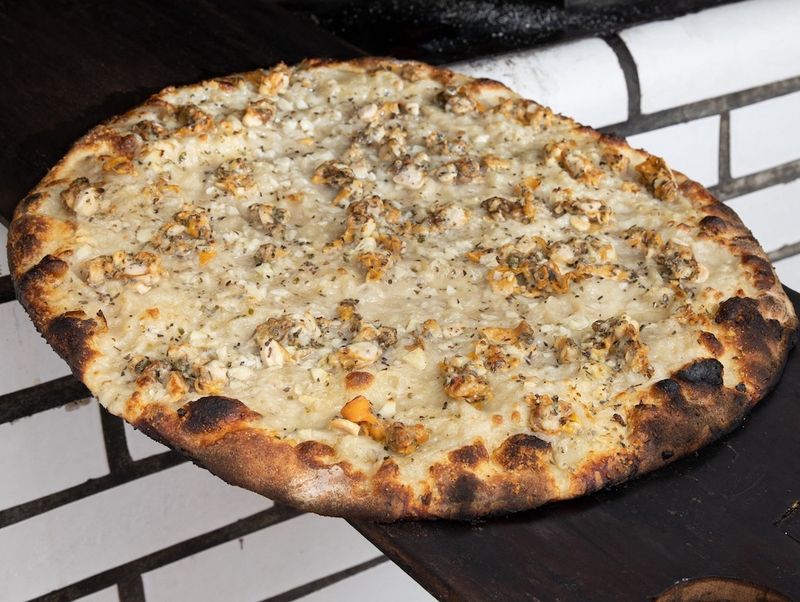
Frank Pepe started it all in 1925, launching what would become a northeastern pizza revolution. ‘Apizza’ (pronounced ‘ah-BEETZ’) distinguishes itself with coal-fired ovens reaching 700+ degrees, creating thin, charred crusts with exceptional chew and flavor complexity.
Sally’s Apizza and Modern Apizza join Pepe’s in the holy trinity of New Haven pizza institutions. Their signature white clam pie—fresh littleneck clams, garlic, olive oil, oregano, and grated cheese—has earned national acclaim.
3. Quad Cities Region, Iowa/Illinois: Scissor-Cut Malt Crust Marvel

Straddling the Mississippi River between Iowa and Illinois, the Quad Cities region boasts a pizza style unlike any other in America. The dough contains brewer’s malt, giving it a nutty, slightly sweet character that complements the spicy tomato sauce generously layered beneath a blanket of fennel-laced sausage.
Harris Pizza pioneered this style in 1960, and locals have been fiercely loyal ever since. The pies are cut into strips using scissors rather than a wheel cutter—a quirky tradition that’s become part of the regional identity.
4. Norwood, Massachusetts: Bar Pizza Paradise Outside Boston

Just outside Boston’s shadow lies Norwood, home to a thriving bar pizza culture centered around Napper Tandy’s Irish Pub. Unlike deep dish or New York style, South Shore bar pizza features a 10-inch thin crust baked in well-seasoned steel pans until the cheese caramelizes at the edges, creating the coveted ‘lace’ effect.
What makes Norwood’s version special is the ‘everything’ approach—pepperoni, onion, pepper, mushroom and linguica (Portuguese sausage) all on one compact pie. The dough extends to the very edge of the pan, eliminating the traditional crust border.
5. Solvang, California: Danish Village, Italian Soul

Surrounded by Danish windmills and half-timbered architecture, Solvang hides an unexpected treasure: Birkholm’s Bakery & Café serves incredible sourdough pizza that marries California wine country ingredients with European baking traditions. The crust ferments for 72 hours, developing complex flavors that complement locally-sourced toppings.
Morning fog from the Pacific rolls through nearby valleys, creating ideal growing conditions for the organic vegetables that adorn these artisanal pies. Farmers deliver produce daily, often still warm from the California sun.
6. Anchorage, Alaska: Frontier Pizza With Arctic Inspiration
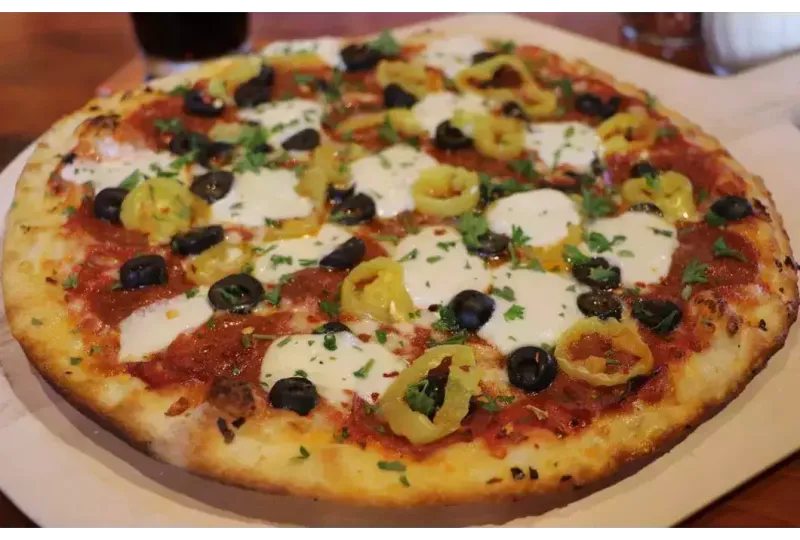
Moose’s Tooth Pub & Pizzeria transforms Alaskan adventure into culinary innovation. Reindeer sausage, fresh-caught salmon, and locally foraged ingredients create uniquely northern flavor combinations. Their sourdough starter—rumored to date back to Gold Rush days—provides distinctive tang to the crust.
During summer months, pizzas feature ingredients grown under the midnight sun, which intensifies vegetable flavors due to extended daylight hours. Winter specialties incorporate preserved ingredients that reflect Alaska’s tradition of preparation for long, dark seasons.
7. Staunton, Virginia: Shenandoah Valley’s Hidden Pizza Gem

Surrounded by the rolling Blue Ridge Mountains, Staunton’s historic downtown harbors Shenandoah Pizza, where Appalachian ingredients meet Italian tradition. Hickory-smoked country ham replaces typical pepperoni, while seasonal morel mushrooms foraged from mountain slopes add earthy depth to specialty pies.
The brick oven dates back to 1887, originally used in the building’s previous life as a bakery during Staunton’s railroad boom years. Decades of use have seasoned the cooking surface, imparting subtle flavors impossible to replicate in modern ovens.
8. Fayetteville, Arkansas: Ozark-Inspired Pizza
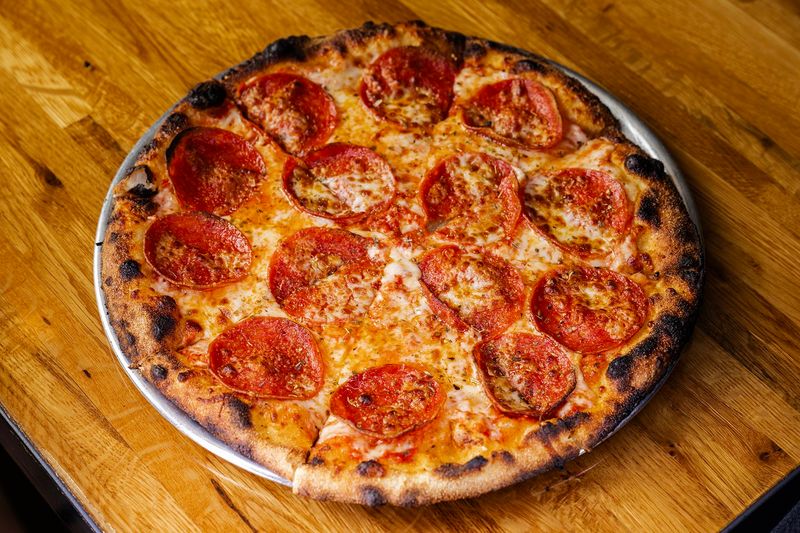
College towns often harbor culinary gems, and Fayetteville proves this rule with Wood Stone Craft Pizza. Their pies feature ingredients from the surrounding Ozark Plateau—black walnuts, pawpaw fruit, and heritage pork from small family farms all make appearances on their seasonal menu.
The restaurant collaborates with nearby Fossil Cove Brewing to create beer-infused dough that adds complexity to their hand-stretched crusts. University of Arkansas agricultural programs supply experimental produce varieties not found elsewhere.
9. Dearborn, Michigan: Middle Eastern Meets Midwest Pizza
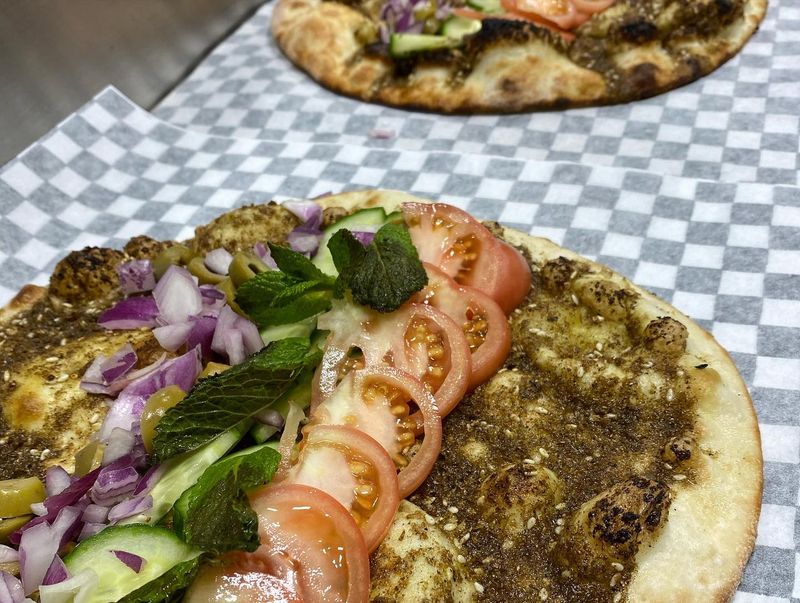
Buddy’s Pizza may dominate Detroit’s pizza scene, but neighboring Dearborn offers something truly unique: Middle Eastern-influenced pizza reflecting the city’s status as home to America’s largest Arab American community. Ollie’s Lebanese Cuisine creates manakeesh-pizza hybrids featuring za’atar, labneh, and ground lamb on traditional pizza crust.
The halal pepperoni at Aladdin’s Pizza incorporates classic Middle Eastern spices like sumac and cardamom, creating familiar-yet-unexpected flavor profiles. Their signature shawarma pizza—topped with thinly sliced marinated beef, tahini sauce, and pickled vegetables—bridges culinary traditions.
10. Galesburg, Illinois: Railroad Town’s Coal-Fired Legacy
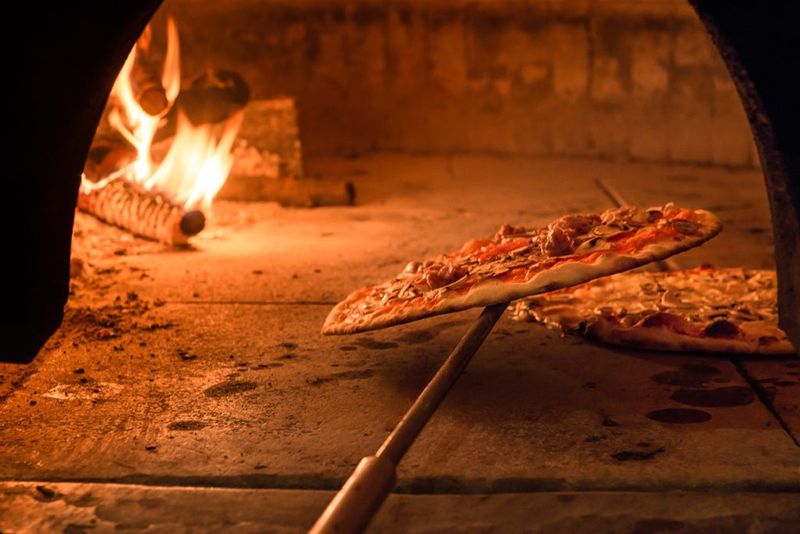
Baked directly on hot bricks without a pan, Galesburg’s signature pizza at Baked develops a distinctive bottom char while maintaining a paradoxically light, airy crust. This coal-mining region’s abundance of anthracite influenced local cooking methods, with pizza ovens reaching temperatures over 900°F.
Railroad workers historically needed portable meals during long shifts, leading to the development of ‘fold-over’ pizza—halfway between traditional pizza and calzone. The style persists today, stuffed with Italian sausage made from a 120-year-old recipe preserved by local butchers.
11. Portsmouth, New Hampshire: Coastal New England Pizza Innovation
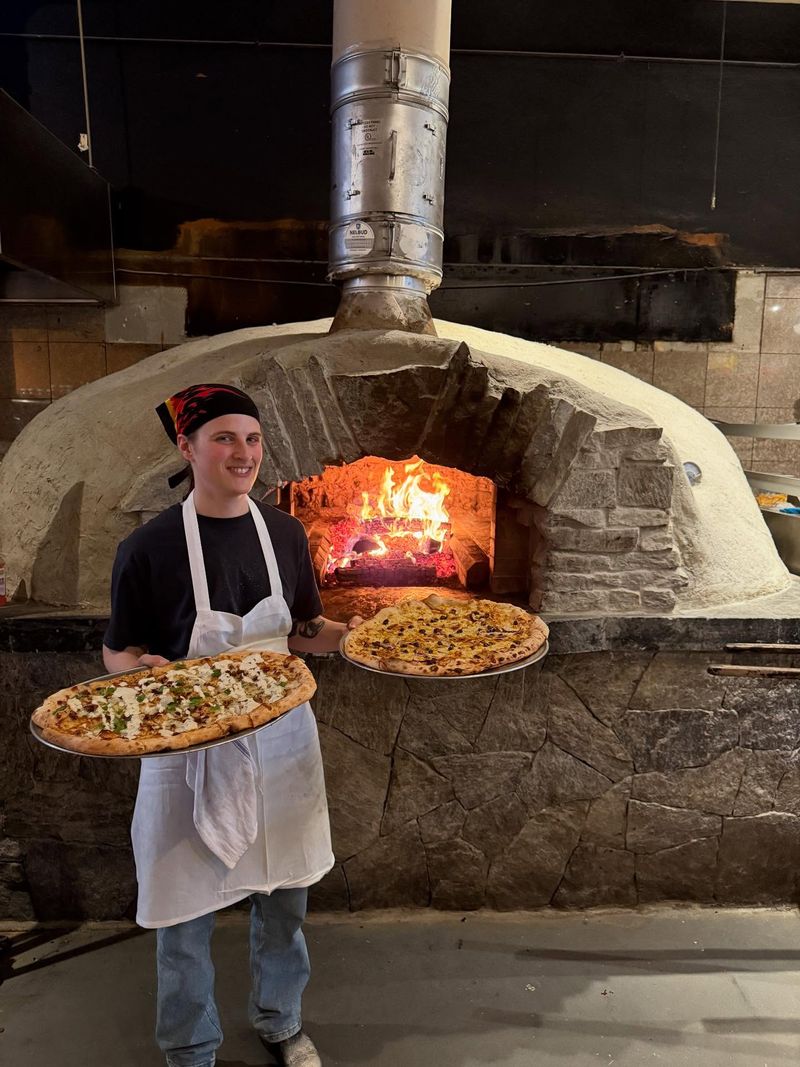
Nestled in Portsmouth’s centuries-old brick downtown, Flatbread Company transforms pizza through commitment to local maritime ingredients. Freshly-caught Atlantic haddock, Maine lobster, and North Atlantic clams frequently appear atop their wood-fired creations, often harvested the same morning they’re served.
Clay ovens built by local artisans reach 800 degrees, creating pies with perfectly blistered crusts in under two minutes. The restaurant sources grain from nearby Maine farms, grinding it in-house daily for maximum freshness and nutritional value.
12. Wickford, Rhode Island: Quahog Clam Pizza

Tucked into a 17th-century fishing village, Wickford Pizza transforms Rhode Island’s beloved quahog clams into pizza perfection. Unlike New Haven’s famous clam pies, Wickford’s version features chopped quahogs—the state’s signature large, hard-shell clams—mixed with herbs, breadcrumbs, and hot peppers in a style reminiscent of the region’s stuffed clam tradition.
The restaurant occupies a former ship chandlery where fishing captains once purchased supplies. Original wide-plank floors and exposed beams create an atmosphere where colonial history meets culinary innovation.
13. Sedona, Arizona: Red Rock Pizza
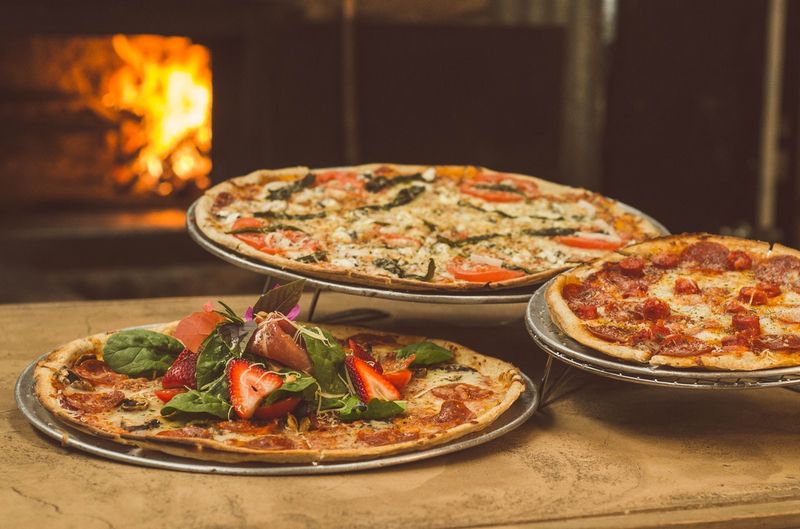
Against the backdrop of Sedona’s famous red rock formations, Pisa Lisa creates pizzas that capture the essence of the Sonoran Desert. Prickly pear cactus fruit reduction glazes the crust edges, while locally-grown tepary beans—cultivated by indigenous communities for centuries—replace traditional tomato sauce on several specialty pies.
Wood for the ovens comes from mesquite trees, imparting a distinctively southwestern smokiness to the crust. The restaurant’s outdoor patio positions diners beneath towering Cathedral Rock, creating a dining experience as visually stunning as it is delicious.
14. Eau Claire, Wisconsin: Cheese Curd Pizza
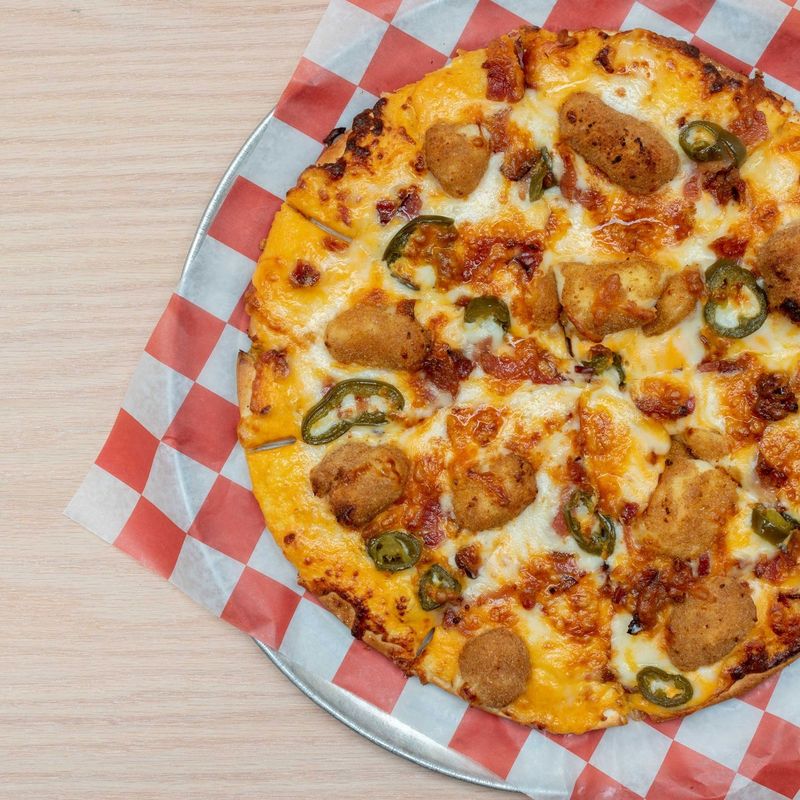
Wisconsin’s cheese obsession reaches its logical conclusion at Eau Claire’s Sammy’s Pizza, where fresh cheese curds—still squeaky when you bite them—blanket specialty pies. Unlike standard mozzarella, these curds maintain their distinct shapes while developing golden-brown spots during baking.
Local dairy farms supply curds daily, often still warm from production. The restaurant pairs these creations with craft beers from nearby breweries like Lazy Monk and The Brewing Projekt, creating perfect flavor combinations.
15. Portland, Maine: Lobster Pizza

Forget Connecticut’s white clam pie—Portland’s Flatbread Company creates the ultimate New England pizza experience with freshly-caught Maine lobster. Fishermen deliver their catch directly to the restaurant’s back door, which opens onto the working waterfront where lobster boats dock between trips.
The sweet, tender lobster meat pairs with a light garlic cream sauce and locally-foraged seaweed, creating a taste of the Gulf of Maine in every bite. Dough rises slowly in the restaurant’s cool maritime environment, developing complex flavors impossible to achieve in warmer climates.

